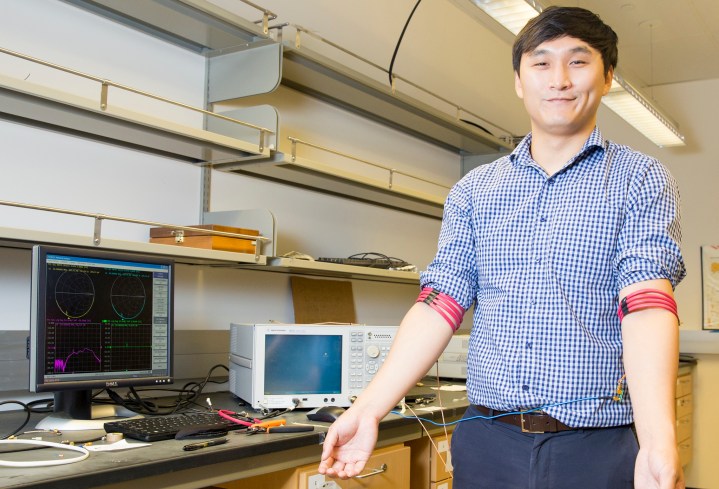
UC San Diego’s magnetic field human body communication system has several advantages over Bluetooth, the most common wireless transmission protocol used to share data over short distances. Bluetooth suffers from path loss, which is a term to describe the attenuation of a wireless signal as it passes through the air and encounters objects that absorb or obstruct its transmission. As a result, Bluetooth devices must have a significant power output capable of sending a signal that can compensate for this degradation.
RELATED: In 3 years, all your smart-home gadgets may speak Bluetooth
UCSD’s magnetic body communication overcomes this limitation by using the body’s magnetic field as a transmission medium, allowing signals to flow from one part of the body to another with minimal loss in strength. The team estimates the path loss from its wireless transmission system is 10 million times lower than that of Bluetooth. Because the signals can travel without little to no power loss, the wireless devices only needs minimal power to produce a signal. These energy savings would translate into significantly longer battery life for wearable and portable devices that use this new body-based communications.
“A problem with wearable devices like smart watches is that they have short operating times because they are limited to using small batteries,” said UCSD electrical engineering Ph.D student Jiwoong Park in a related statement. “With this magnetic field human body communication system, we hope to significantly reduce power consumption as well as how frequently users need to recharge their devices.”
Besides power savings, UCSD’s magnetic system also offers improved security when compared to Bluetooth, which radiates its signal to all devices within a 30-foot radius. Theoretically, anyone within that area can detect the Bluetooth signal and attempt to intercept the data being sent over the connection. Interception is much more difficult in a wireless system that uses the body to send its signal. A hacker would need to attach a snooping device directly on the user’s body to hijack that signal.
UCSD’s magnetic field human body communication system is still in the early stages of its development, but the technology shows promise as an ultra low power system for wearable devices. Besides the obvious application in smartwatches and fitness trackers, the team envisions a broader use of the technology. For example, this magnetic transmission would be ideal for a full-body monitoring system that gathers data from wireless sensors attached to different parts of the body.
Editors' Recommendations
- What is Bluetooth multipoint and why your next earbuds or headphones should have it
- Monster expands DNA lineup with new earbuds, Bluetooth speakers
- Give your head a shake: Klipsch’s new earbuds use head gestures as controls
- Amazon wants your kids to use Alexa and its new Echo Glow night-light



